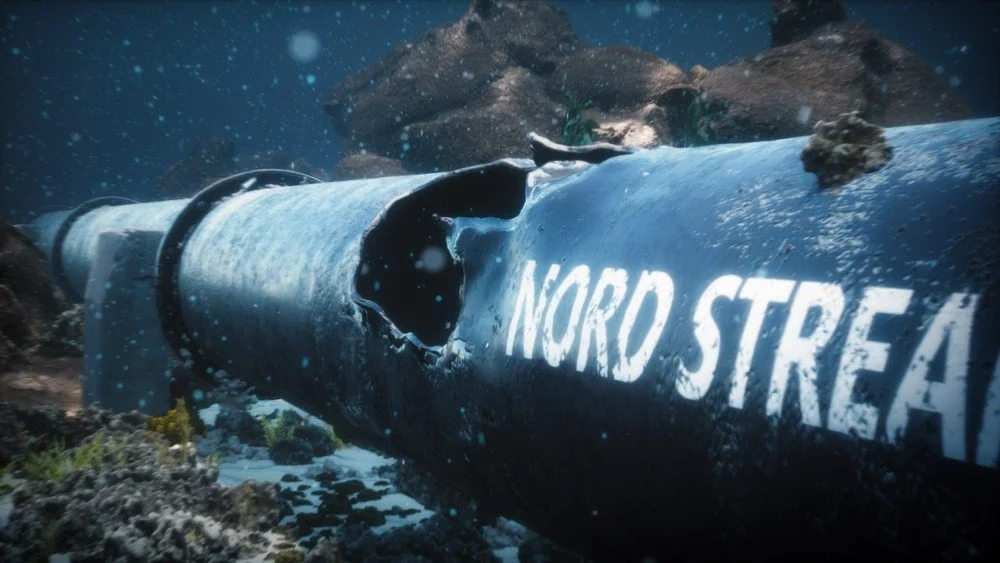Interview with Jean-François Delepau CEO, LYNRED
/SDBR: On June 1, you named the new company Lynred, resulting from the merger between ULIS-Sofradir: What’s behind the name?
Jean-François Delepau: Finding the name was no easy task. The new name had to unite Sofradir-ULIS. The “Red,” in Lynred, refers to our core business, infrared detection. “Lyn” is from “lynx,” an animal known for its vision, agility, and power. The Lynred logo—which incorporates the eye that was already a part of our companies’ visual identities—was designed to express precision, support, teamwork, protection, trust and vision. However, Sofradir and ULIS will live on as product brands for the time it takes our customers to adopt the new company name. Since 2012, we have played a role in consolidating infrared technology in France, including integrating the infrared technologies that had been developed by our shareholders: Safran and Thales. This means that today, Lynred possesses the whole range of infrared technologies that were developed in France. Lynred is now the world’s number-two developer of infrared technology in the two fields we serve, and we have an 18% share of the global market. The company boasts 1,000 employees, mostly based in Grenoble, and generates annual revenue of €225 million (43% on the defense market, 34% on the industrial market, 12% on the civil aeronautics and space markets, and 11% on the consumer goods market).
SDBR: Why the merger?
DAPHNIS HD MW
Jean-François Delepau: Sofradir had built its growth within the defense and space markets, manufacturing limited production runs and, often, custom products. ULIS had been seeing strong growth on products that, increasingly, were oriented toward consumer markets (leisure, home automation, automotive, etc.) that required volume manufacturing (the company has shipped more than a million detectors since it was founded). The market has shifted over the past four years, with demand for detectors offering increasing performance and ease of integration for new applications (easier integration into cameras, for example), as well as lower power consumption and less maintenance. Lynred will streamline operations across the entire lineup of infrared products and improve operational efficiency with the goals of getting new technologies to customers worldwide even faster and continuing to grow. Lynred was created to respond to the needs of its customers who, increasingly, are seeking a single supplier capable of providing a comprehensive range of infrared products. The merger will also give us the critical mass we need to speed up time-to-market for new products, achieve more agile resource management, and harmonize our own processes. For our customers, Lynred will continue to be a reliable, long-term supplier and a quality partner for the best in infrared design and integration into end products. The US subsidiary will remain a subsidiary, with the name Lynred USA.
SDBR: What makes your market unique?
Jean-François Delepau: We operate on three market segments: industrial and consumer, which is highly competitive and, therefore, price-sensitive; the high-performance segment, which mainly concerns defense products that have to be both reliable and robust; and the “custom” market for space and aviation, which includes the Rafale fighter jet, in particular. So, we have to be able to stay ahead of the needs of these market segments as best we can. We also have a strong capacity to support our customers throughout our products’ lifecycles. Infrared technology and training go hand in hand: When a customer decides to develop a camera using our components, for example, we help that customer to develop the solution by providing training, making recommendations and completing testing with the customer throughout their development lifecycle. This is one of the things that makes us unique; it is also one of our competitive advantages.
SDBR: What will your product lineup look like?
SNAKE SW 06 InGaAs
Jean-François Delepau: Lynred is now positioned to offer its customers a product lineup that is unique on the market, as well as a range of solutions for segments from defense and security to industrial. Our products and solutions run the gamut from the lowest possible cost to the highest possible performance. Our catalog includes MCT (Mercury Cadmium Telluride) sensors—the company’s original products, which are used for high-performance applications like defense—and InGaAs (Indium Gallium Arsenic) technology, which operates in the 0.9 micron to 1.7 micron range, for high-performance detection applications, such as identifying defects not detectable in the visible range on industrial production lines. Finally, our microbolometer products are used in surveillance cameras and in the night-vision goggles used by infantry soldiers. Generally speaking, our products are designed to preserve and protect across a broad range of uses: building thermal audits, smart agriculture, atmospheric CO2 measurement, Advanced Driver Assistance System (ADAS) for pedestrians and cyclists detection at night, video surveillance, assistance for firefighters, border control, etc.
SDBR: How do you see your market evolving?
Jean-François delepau: Lynred will pursue a pro-active growth strategy. The military infrared imaging systems market, estimated at $8.5 billion (around €7.6 billion) in 2018, is expected to grow to $14 billion (around €12.5 billion) by 2023. If you extrapolate the data from the industrial and consumer camera market, this market could grow from $2.9 billion (around €2.6 billion) to $4.1 billion (around €3.7 billion) over the same period. This represents potential growth of up to 10% for cameras and systems.
SDBR: What does the future hold for infrared technology?
Jean-François Delepau: The French government officially kicked off the Nano 2022 program, France’s component of the European nanoelectronics strategy, with €1 billion in government funding over five years. With the government’s support, Lynred is investing €150 million over five years to develop its future generations of infrared detectors. These new IR systems will be designed to meet the needs of autonomous systems for smart buildings (workspace management, energy efficiency), traffic safety, and vehicle cabin comfort. The development work will also encompass very-large-format infrared detectors used in astronomy and space observation and lightweight, compact detectors that can be integrated into portable systems and drones.
SDBR: Are you experiencing any recruitment challenges?
pico640 gen2 Microbolometer
Jean-François Delepau: The job market has been tightening over the past year, which means that it takes longer to hire. In some cases, hiring can be a real challenge. Locally, we have to compete with the semiconductor market, which has been absorbing a lot of candidates since it returned to growth. We are always seeking junior candidates we can train. As an innovation-driven company, we strive to create a level of trust in the workplace that allows our employees to grow professionally. Our hope is that the opportunities for growth on our market, developments in consumer products, and the feeling of belonging to an environmentally-responsible company are something our employees can say they are proud to be a part of moving forward.
Photos credits: Lynred
















